这是我参与「第五届青训营 」伴学笔记创作活动的第 9 天
并发编程
并发 vs 并行
并发:多线程程序在一个单核通过时间片运行
并行:多线程程序在多个核的cpu上运行
- 线程:用户态,轻量级线程,栈MB级别
- 协程:内核态,线程跑多个协程,栈KB级别
通过通信共享内存 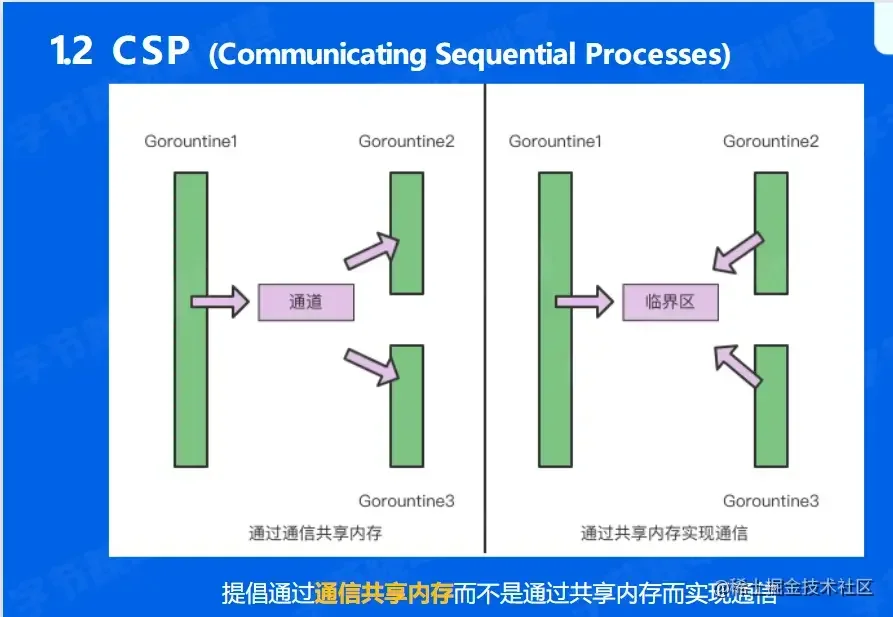
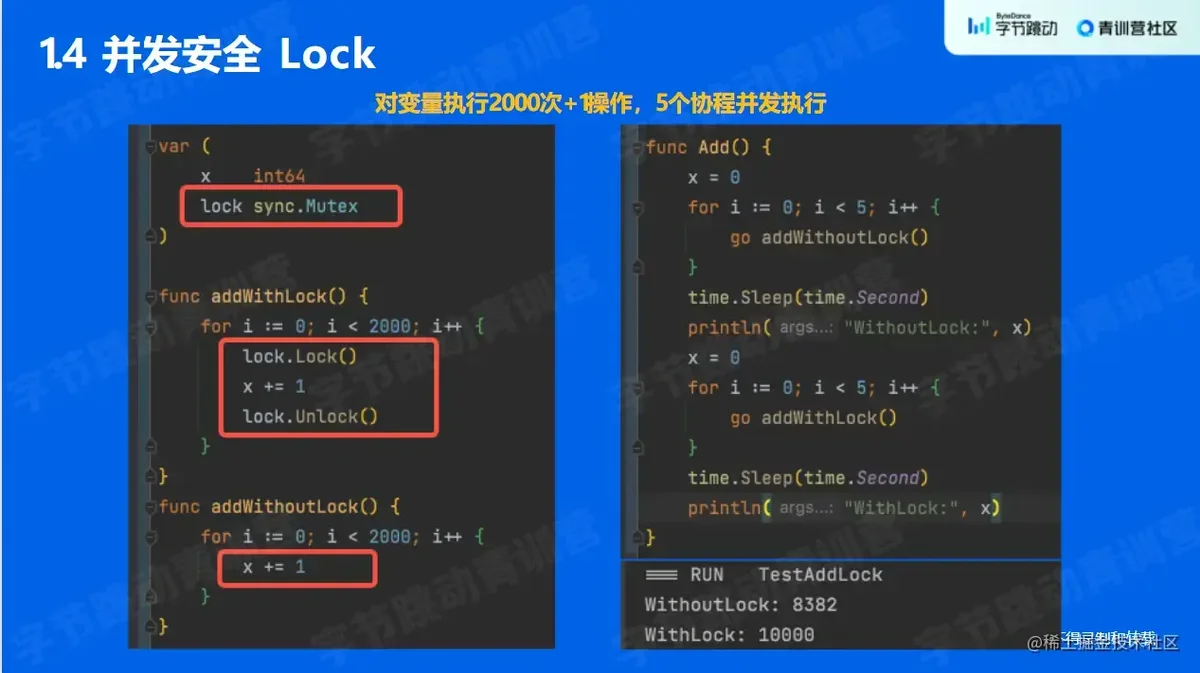
WaitGroup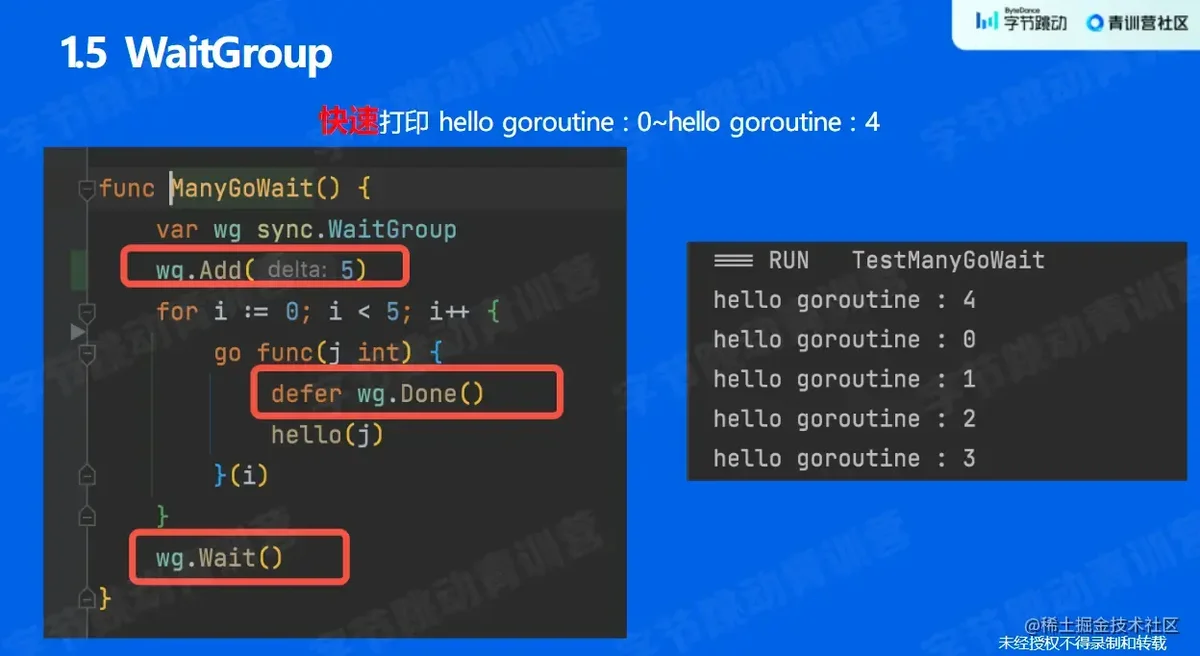
依赖管理
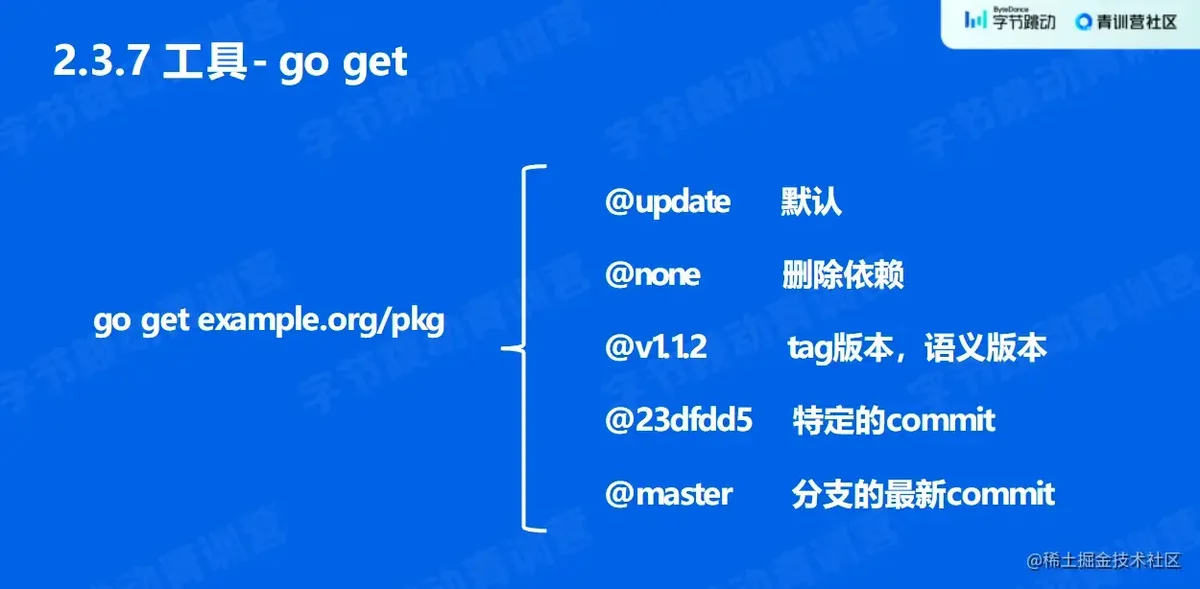
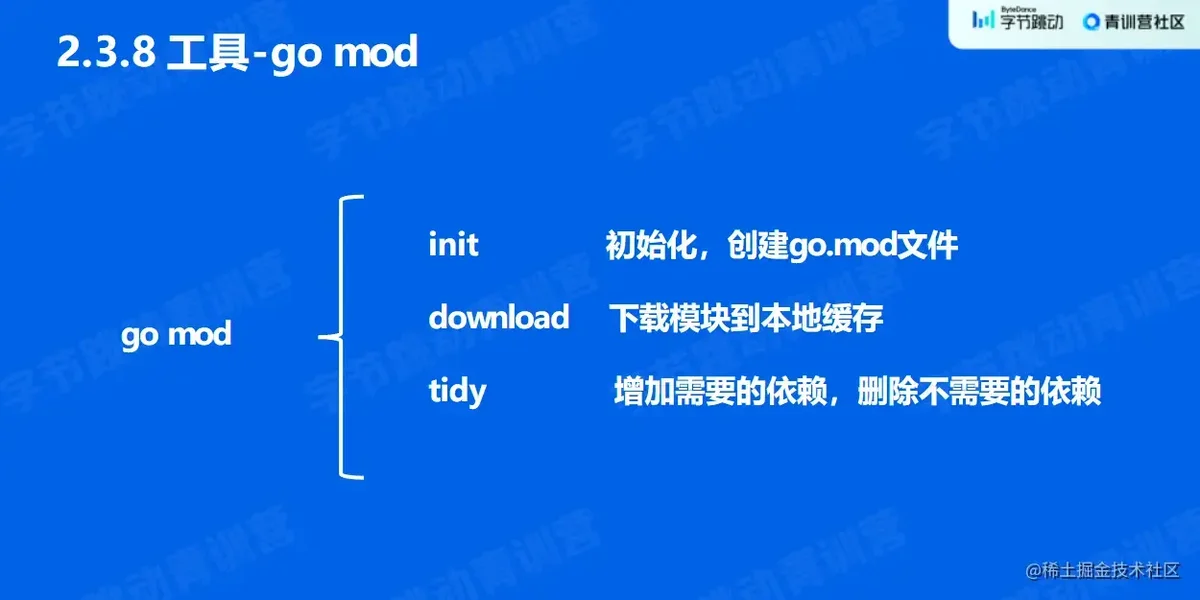
测试
质量就是生命!
测试是避免事故的屏障
- 回归测试
- 集成测试
- 单元测试
从上到下,覆盖率逐层变大,成本却逐层降低
Rules:
- 所有测试文件以 _test.go结尾
- func TestXxx(t *testing.T)
- 初始化逻辑放到TestMain中
func TestMain(m *testing.M) {
//测试前:数据装载、配置初始化等前置工作
code := m.Run()
//测试后:释放资源等收尾工作
os.Exit(code)
}
复制代码
复制代码评估——代码覆盖率
assert.Equal(t,true,isPass)Tips:
- 一般覆盖率:50% ~60%
- 测试分支相互独立、全面覆盖
- 测试单元粒度足够小,函数单一职责
单元测试-Mock
基准测试
- 优化代码,需要对当前代码分析
- 内置的测试框架提供了基准测试的能力
项目实践
ER图 Entity-Relationship Diagram
分层结构
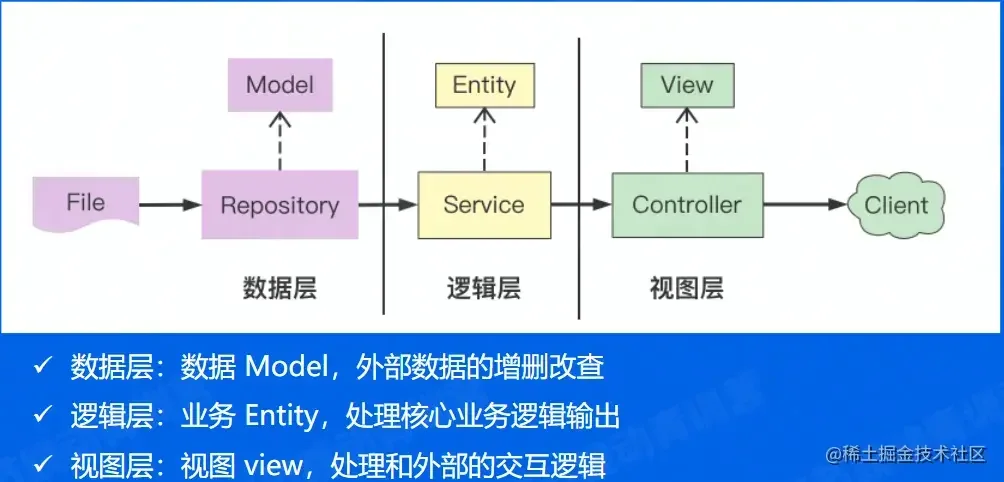
代码
package leetcode
func maxArea(height []int) int {
max, start, end := 0, 0, len(height)-1
for start < end {
width := end - start
high := 0
if height[start] < height[end] {
high = height[start]
start++
} else {
high = height[end]
end--
}
temp := width * high
if temp > max {
max = temp
}
}
return max
}
复制代码
复制代码题目大意
给定一个数组,要求在这个数组中找出 3 个数之和为 0 的所有组合。
解题思路
用 map 提前计算好任意 2 个数字之和,保存起来,可以将时间复杂度降到 O(n^2)。这一题比较麻烦的一点在于,最后输出解的时候,要求输出不重复的解。数组中同一个数字可能出现多次,同一个数字也可能使用多次,但是最后输出解的时候,不能重复。例如 [-1,-1,2] 和 [2, -1, -1]、[-1, 2, -1] 这 3 个解是重复的,即使 -1 可能出现 100 次,每次使用的 -1 的数组下标都是不同的。
这里就需要去重和排序了。map 记录每个数字出现的次数,然后对 map 的 key 数组进行排序,最后在这个排序以后的数组里面扫,找到另外 2 个数字能和自己组成 0 的组合。
代码
package leetcode
import (
"sort"
)
// 解法一 最优解,双指针 + 排序
func threeSum(nums []int) [][]int {
sort.Ints(nums)
result, start, end, index, addNum, length := make([][]int, 0), 0, 0, 0, 0, len(nums)
for index = 1; index < length-1; index++ {
start, end = 0, length-1
if index > 1 && nums[index] == nums[index-1] {
start = index - 1
}
for start < index && end > index {
if start > 0 && nums[start] == nums[start-1] {
start++
continue
}
if end < length-1 && nums[end] == nums[end+1] {
end--
continue
}
addNum = nums[start] + nums[end] + nums[index]
if addNum == 0 {
result = append(result, []int{nums[start], nums[index], nums[end]})
start++
end--
} else if addNum > 0 {
end--
} else {
start++
}
}
}
return result
}
// 解法二
func threeSum1(nums []int) [][]int {
res := [][]int{}
counter := map[int]int{}
for _, value := range nums {
counter[value]++
}
uniqNums := []int{}
for key := range counter {
uniqNums = append(uniqNums, key)
}
sort.Ints(uniqNums)
for i := 0; i < len(uniqNums); i++ {
if (uniqNums[i]*3 == 0) && counter[uniqNums[i]] >= 3 {
res = append(res, []int{uniqNums[i], uniqNums[i], uniqNums[i]})
}
for j := i + 1; j < len(uniqNums); j++ {
if (uniqNums[i]*2+uniqNums[j] == 0) && counter[uniqNums[i]] > 1 {
res = append(res, []int{uniqNums[i], uniqNums[i], uniqNums[j]})
}
if (uniqNums[j]*2+uniqNums[i] == 0) && counter[uniqNums[j]] > 1 {
res = append(res, []int{uniqNums[i], uniqNums[j], uniqNums[j]})
}
c := 0 - uniqNums[i] - uniqNums[j]
if c > uniqNums[j] && counter[c] > 0 {
res = append(res, []int{uniqNums[i], uniqNums[j], c})
}
}
}
return res
}
复制代码